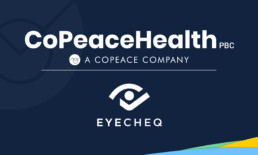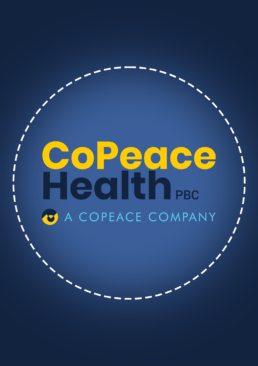Share
The Anatomy of a Highly Connective, High-Converting Email
Part of a series on effective digital communication
By Lindsay Hope
As the year 2021 comes to a close, there’s a lot of marketing lessons to glean from the extended pandemic world we’re living in. For those of us in the small business digital space, one of the top takeaways is: Never underestimate the power of email. (Contrary to what you might have heard, email is not dead.)
With an ROI of 3,800-4,400% (according to Hubspot), it’s undeniable that email is the channel to utilize and optimize as we turn the corner into next year. Emails solve problems and build connections with your audience. Then, when it comes time to sell your products or services, you’ve already established trust, built authority, and primed your prospects to buy.
Think about that ROI stat in a different way: for every $1 spent, email generates an average of $38-44. When you think about the cost of developing an email marketing strategy vs. attempting to acquire customers via social media platforms (which can cost up to five times as much!), you’ll find that there’s no comparison in terms of value.
So, once you’re convinced that email marketing is the way to go, next, you’ve got to learn how to create highly connective, high-converting emails.
What separates a decent email from a super fantastic email that your prospects can’t wait to open, read, and engage with? A few things.
1. An Enticing Subject Line
The NUMBER ONE goal of your subject line is to get the reader to open your email. Create curiosity, urgency, and intrigue — but don’t be clickbaity! Make sure you’re authentic and deliver what you say you will. Subject line length can vary, but as a good rule of thumb, shorter is better (try under nine words and around 60 characters maximum). But remember — there’s no right or wrong way to write a subject line. Your audience might prefer a different format or style than other audiences.
Pro tip: Test, test, test! Use trial and error to find out what works best to get engagement with your audience and for your brand. Try using emojis, title and/or sentence case, and longer vs. shorter subject lines. Most email service programs provide an option to A/B test two different subject lines. This means you can send two options to a portion of your audience (usually around 20%) to determine which one works better/gets more opens. Then the winning subject line is sent to the remainder of your list. Take advantage of this! Test, optimize, and test again.
2. Optimized Preview Text
Never ignore this valuable email real estate! Consider what people will see when they read emails on their phones. This almost always includes at least one line of a preview text. Optimize your email copy for the small space you have after the subject line to sweeten the deal — aka incentive to open — your email.
Pro tip: The first few words of your preview text count the most! Make sure your reader will see the most important information first. Give them the critical information that the email is about — and still, find a way to lure them into clicking it open and reading the rest.
3. Focused Body Copy
Once you’ve earned the open, make sure you provide concise, valuable information in the body of your email! Start with a great hook to keep the reader interested. Get quickly to the point of your email; you don’t want to lose their attention (which isn’t going to last more than a few seconds, trust me). Don’t write a novel here… emails are meant to be concise. Make sure every sentence delivers value. If it doesn’t, delete it.
Pro tip: Focus each email on only one idea. Multiple ideas dilute your message and can confuse your reader, making it less likely that they’ll take the action you want them to take. This leads to the next point…
4. A Killer CTA
Don’t be shy — tell your readers what you want them to do while/after reading your email. Write a call to action (CTA) that they can’t help themselves from clicking. It can be as simple as “Buy Now” or “Book a Call,” or you can try getting creative with it. Within the email is not the time to beat around the bush. Make sure you give the reader a reason to have opened your email!
Pro tip: Use the same CTA throughout the email to give your reader multiple opportunities to take the action you want them to take. You can even add it again in the P.S.
5. BONUS: A Few Additional Important Tips
– Personalization in emails is uber-important. Go beyond adding a greeting with someone’s first name. Segment your audience according to the parameters you deem important — actions they’ve taken, demographic characteristics, or triggers that are relevant to your business. Personalization helps you deliver critical information to the right audience at the right time.
– Optimize your offer. If the copy you’re using in your emails isn’t working, go back to the drawing board and think of another way to build a relationship with them and give them what they want. Think beyond features and dig into benefits. How will your product or service transform their life? For example, the end goal of an alarm clock probably isn’t just to wake up earlier. It’s a trigger that helps them get up early to work out, meditate, or read a business book to help them achieve a result.
– Pay attention to timing and frequency. For many businesses, Tuesdays are the best day to send weekly emails. Is that true for your business? Maybe so, maybe not. Test this too so you can optimize the time and frequency when you connect with your audience.
One of the biggest mistakes you can make with email marketing is waiting to get started.
You don’t need to have an intricate strategy to start communicating with your prospects and customers via this channel. Sure, it’s helpful to build that over time, but don’t let the lack of a robust strategy hold you back from simply saying, “Hello, here’s what we’re all about, do you want to learn more?” to them. Your only regret will be not starting to communicate with email sooner.
Lindsay Hope is a copywriter and marketing strategist with CoPeace. As a forward-thinking holding company, CoPeace is building a portfolio of carefully selected for-profit companies with measurable social and environmental impact. To learn more about impact investing, check out CoPeace’s Intro to Impact Investing.
Related Blogs
Nakeita Norman | Partner
June 2, 2025
Barbara Winter | Impact Director
January 14, 2025
Umadevi Gopaldass | Board of Directors
April 23, 2024









